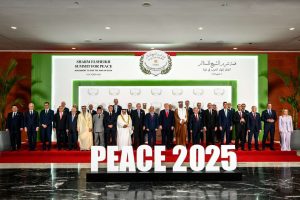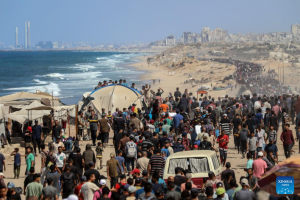
India has crafted a draft policy for the Arctic the frozen northern cap of the sphere, which is ultra-rich in resources. Apart from the minerals including copious reserves of oil and gas, the Arctic is also opening new and cheaper shipping routes. With climate change also melting polar ice caps, new commercial ships can reach out to both North America and northern Europe, saving time and slashing costs. The government is now seeking feedback from the public so that the policy can be launched at the earliest…writes Vijay Sakhuja.
The ‘Roadmap for Sustainable Engagement’ in the Arctic region and has five pivots science and research; economic and human development cooperation; transportation and connectivity; governance and international cooperation; and national capacity building. Each of these supports have clear-cut objectives and Action Plans. In policy making circles many are burning the midnight oil to assign timelines, set up a review mechanism, and allocate resources for its implementation.
The National Centre for Polar and Ocean Research (NCPOR) under the Ministry of Earth Sciences, which is the lead organization for India’s Polar research programme, will serve as the nodal agency. As many as 15 other ministries, government departments and institutes will be associated with the implementation of the Policy including the Ministry of External Affairs that would provide the ‘external interface’ to the Arctic Council. The government also wishes to pursue a multi-stakeholder approach and involve the academia, research community, business and industry. Overall, it is a forward-looking policy with clear cut deliverables that can potentially generate numerous positive spinoffs across domains.

Although the Arctic is a recent entrant in New Delhi’s foreign policy horizons, India’s engagement in the Arctic dates back to over hundred years when it signed on February 9, 1920 the �Treaty concerning the Archipelago of Spitsbergen’ or the ‘Svalbard Treaty’. At that time, India was part of the British overseas dominions and the King of Britain had signed the treaty as the Emperor of India.
India began to look towards the Arctic after its successes in scientific research in the Antarctic, where it set up research stations in the 1980s. It watched with interest the evolving climate-induced changes and strategic developments in the Arctic region. In 2007, a scientific research station ‘Himadri’ was established at Ny Alesund, Spitsbergen about 1200 kilometers from the North Pole which gave a thrust to India’s endeavour in the advancement of polar sciences. Thereafter, in 2013, India was admitted as an Observer in the Arctic Council, a high-level intergovernmental forum for Arctic cooperation set up with the twin-mandate of environmental protection and sustainable development. This was based on India’s professed commitment to pursue scientific and environmental research activities.

India’s continued interest in the Arctic and the current policy pronouncement comes at a time when the Arctic region is witnessing significant changes. In 2020, the sea ice cover contracted to its second lowest extent in the last five decades. Besides shrinking, the sea ice is getting thinner which is a clear sign that the Arctic is warming rapidly due to heat waves from forest fires in Siberia, warmer temperatures over the Central Arctic, and the thawing permafrost in Russia. These can potentially affect the Indian Monsoon system and the glaciers in the Himalayas, also referred to as the Third Pole. Both issues figure prominently in India’s thinking and find reference in the draft Arctic Policy.
India’s engagement in the Arctic has predominantly been limited to studies related to polar science, oceanographic, atmospheric, pollutant and microbiology related studies, and continue to this day; but these have expanded the domain of resource development. Part of this shift can be attributed to the evolving geo-economic developments in the North pivoting on oil and gas, mining, opening up of new shipping routes connecting Asia and Europe which would be of immense economic value to India. Although the Arctic Policy acknowledges the economic wealth of the region, it notes the adversarial impacts of increased economic activity, which “necessitate the creation of effective mechanisms that promote responsible business activities based on the three pillars of sustainable development environmental, economic and social”.

The draft Arctic Policy also envisages connecting with the Arctic residents, especially indigenous communities and offer “viable opportunities in different sectors where Indian enterprises can be involved, become part of international commerce, promote traditional indigenous knowledge, businesses and best practices”. This should trigger numerous opportunities for the indigenous communities’ living in the Himalayan mountain region on issues of conservation and sustainable development of the local habitats and wellbeing of communities. It could very well herald exchanges between the Himalayan communities’ and Arctic indigenous people on ‘natural values and cultural heritage’. These can be synchronized and adapted to the Goal 11 of the SDG 2030.
India also wants to offer its technological prowess in the field of space technology. Its RESOURCESAT can offer a number of services in the Arctic regions such as land and water management, telecommunications and connectivity, maritime safety and navigation, search and rescue, hydrographic surveys, climate modelling, environmental monitoring and surveillance, mapping and sustainable management of marine resources.
It is important to mention that a considerable area of the Himalayan mountains is “underlain by frozen ice and is sensitive to climate change and global warming while glaciers have been substantially studied in the northwestern Himalaya, permafrost is not observable spatially”. It is also fair to argue that global warming combined with human intervention can result in landslides and avalanches. Also, glacial lake outburst floods (GLOFs) can result in sudden releases of large quantities of water that can wreak havoc on mountain communities. Apparently, there are 47 such critically dangerous GLOFs which could burst, flooding downstream areas in Nepal, China and India.
The above issue is closely associated with the mountain communities and connectivity infrastructure in the Himalayan region. The later gains greater salience in the context of ongoing China-India military standoff along the Line of Actual Control (LAC). China has already built sophisticated road, rail and air infrastructure over permafrost to support military operations. India is beginning to invest in building tunnels, roads, airfields and other military related supply chains.

The Indian Border Roads Organisation (BRO) is entrusted with keeping key military infrastructure in the mountains fully operational. It is important for the BRO to study and ascertain through scientific modelling how climate induced changes along the LAC will impact on military preparedness in the coming decades under a variety of climate conditions. This will ensure the physical stability of military infrastructure and guarantee the Indian Army to detect and defend against the Chinese military adventurism.
(Dr Vijay Sakhuja is former Director National Maritime Foundation, New Delhi)





